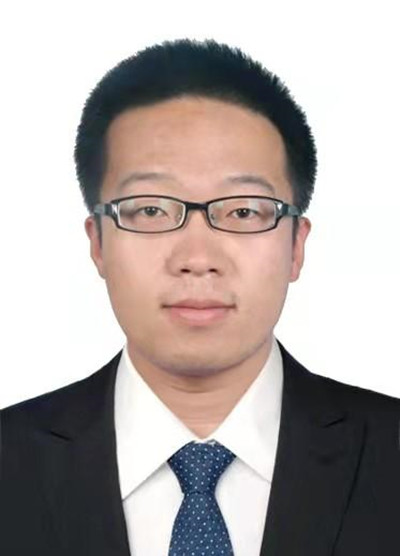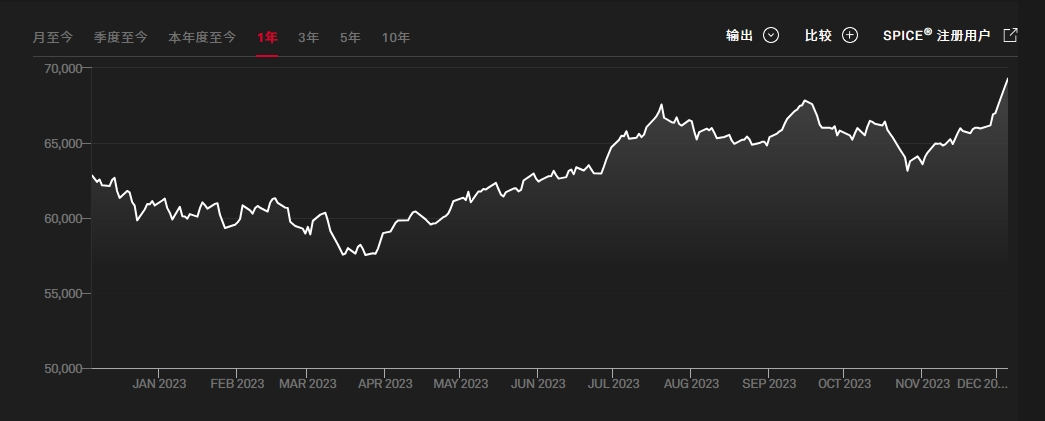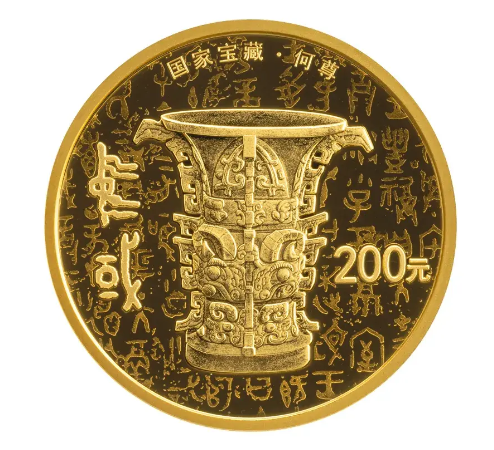于洋是一位出生于沧州的教授,现任北京航空航天大学航空学院动力学与控制系支部书记。他毕业于清华大学,获得博士学位。2022年1月,一颗小行星被国际编号为42175号,并以他的名字命名为“Yuyang”星。
本页面主要目录有关于于洋的:人物经历、主要成就、获得荣誉、社会任职、人物事件等介绍

于洋是一位出生于沧州的教授,现任北京航空航天大学航空学院动力学与控制系支部书记。他毕业于清华大学,获得博士学位。2022年1月,一颗小行星被国际编号为42175号,并以他的名字命名为“Yuyang”星。
本页面主要目录有关于于洋的:人物经历、主要成就、获得荣誉、社会任职、人物事件等介绍
于洋
中华人民共和国
1986年1月10日
清华大学
博士
北京航空航天大学教授、航空学院动力学与控制系支部书记
2005年9月-2009年7月北京航空航天大学,大学本科毕业
2009年9月-2014年7月清华大学,航空宇航科学与技术,博士学位
2012年8月-2013年8月马里兰大学,合作导师Derek C. Richardson
2012年至2013年在美国马里兰大学做访问学者;
2014年至2016年于法国国家科学研究中心尼斯天文台做博士后研究;
2016年入职北京航空航天大学并获评副教授;
2020年获评教授。
主要从事深空探测动力学与控制、复杂环境探测机器人动力学与控制等方面的研究。
[1]基于数据驱动的智能自主机器人
[2]仿生机器人
[3]复杂环境探测机器人
[4]空间复杂环境下的颗粒系统动力学
[5]小天体形成与演化的动力学机制
[6]不规则弱引力场中的轨道动力学行为
[1]非线性动力学
[2]现代力学基础
[3]理论力学
致力于深空探测动力学与控制方向的研究,取得了一系列有价值的研究成果;被《科学》杂志网站报道,得到国际同行的高度评价;2020年10月作为通讯作者在Nature子刊《Nature Astronomy》发表了最新研究成果,文章标题为《Reconstructing the formation history of top-shaped asteroids by the surface boulders distribution》(中译:根据表面巨石分布重构陀螺型小行星的形成历史),揭示了太阳系一类陀螺型小行星表面演化的动力学机制关于行星表面力学环境的研究成果;独立开发了小行星碎片云分析软件,被欧空局Hera任务论证组采用,由约翰霍普金斯大学APL实验室主任Andrew Cheng邀请加入国际小行星探测任务DART科学团队。发表SCI论文30余篇,由斯普林格出版英文学术专著1部,现为AIAA会员、AGU会员、北京力学会青年工作委员会委员。2018年入选北京市科协青年人才托举项目,2020年入选国家自然科学基金委优青项目。
[1]国家自然科学基金优秀青年科学基金项目,空间复杂环境下的颗粒动力学,2021/01-2023/12,120万元,在研,主持
[2]国家自然科学基金青年基金项目,11702009,双小行星系统构型演化的动力学机制研究,2018/01-2020/12,35万元,结题,主持
[3]科技委前沿创新计划,泛在寄生数理学机理研究,2018.5—2019.5主持
[4]欧盟FP7框架研究计划课题,640351,NEOShield2: Science and Technology for Near-Earth Object Impact Prevention,2015/03-2016/01,100,000 EUR,已结题,参加
[5]欧盟FP7框架研究计划课题,282703,NEOShield WP3: Modelling / Numerical Simulations,2014/08-2015/03,120,000 EUR,已结题,参加;
[6]国家自然科学基金面上项目,11372150,小行星不规则引力场中的轨道动力学与控制,2014/01-2016/12,80万元,已结题,参加
[7]国家重点基础研究发展计划(973)子课题,2012CB720000,不规则弱引力场中探测器运动行为分析与着陆控制,2012/01-2013/12,724万元,已结题,参加
[1]Hexi Baoyin,Erik Asphaug,Yang Yu,Bin Cheng.Reconstructing the formation history of top-shaped asteroids by the surface boulders distribution.Nature Astronomy.2020
[2]于洋,宝音贺西.第9章.小行星附近的轨道.《深空探测动力学与控制》,主编:李俊峰.北京:科学出版社2014.
[3] Yu Y. Orbital Dynamics in the Gravitational Field of Small Bodies. Springer, 2016.
[4]于洋,宝音贺西,李俊峰.空间绳索系统的动力学建模方法.北京力学会2010学术年会, 2010,10,北京.
[5]于洋,宝音贺西,李俊峰.自旋空间系的引力潮汐推进.全国第十五届空间及运动体控制技术学术年会论文,2012, 10,合肥.
[6]于洋,宝音贺西,李俊峰.小行星(216)Kleopatra 附近的动力学环境.中国宇航学会2011年学术年会,2011,12,北京.
[7] H. Niu, X. Zeng, J. Guo, Y. Yu, and F. Zhang. A CONCEPT OF A SWIMMING ROBOT FOR FUTURE EXTRATERRESTRIAL LIFE EXPLORATION. IAA-AAS-DyCoSS, Changsha, China, 2018.
[8] M. Hirabayashi, A. B. Davis, S. P. Naidu, Y. Yu, et al. NASA’s DART mission to Didymos: A scenario of mutual orbit perturbation due to shape deformation of the primary caused by impacts of DART-driven ejecta. 9th Workshop on Catastrophic Disruption in the Solar System (CD9), Kobe, Japan, 2018.
[9] M. Hirabayashi, A. B. Davis, S. P. Naidu, Y. Yu, et al. NASA’s DART MISSION TO DIDYMOS: THE EFFECT OF SHAPE DEFORMATION OF THE PRIMARY AND ELLIPTICITY OF THE SECONDARY ON POST-IMPACT ORBITAL PERIOD. 49th Lunar and Planetary Science Conference, TX, USA, 2018.
[10] Hamilton D. P., Fahnestock E. G., Schwartz S. R., Murdoch N., Asphaug E., Cheng A. F., Housen K. R., Michel P., Miller P., Stickle A., Tancredi G., Vincent J. -B., Wünnemann K., Yu Y., Delchambre S., Ziegler T., Falke A., and The AIDA Impact Simulation Working Group. Asteroid Impact Deflection and Assessment (AIDA) Mission Properties of Impact Ejecta. DPS-EPSC Joint Meeting, Pasadena, California, USA, 2016.
[11] Schwartz S. R., Asphaug E., Cheng A., Housen K. R., Michel P., Miller P., Stickle A., Tancredi G., Vincent J. -B., Wünnemann K., Yu Y., et al. Modeling and Simulation of Impact Outcomes: Ejecta Properties and Evolution. The 47th Lunar and Planetary Science Conference, Woodlands, Texas, USA, 2016.
[12] Statler T., Richardson D. C., Walsh K., Yu Y., Michel P. A mechanism for self-reinforcing YORP acceleration of fast-rotating asteroids. Asteroids, Comets and Meteors, Helsinki, 2014.
[13] Richardson D. C., Michel P., Schwartz S., Yu Y., Ballouz R., Matsumura S. Applications of granular dynamics numerical simulations to asteroid surfaces. Asteroids, Comets and Meteors, Helsinki, 2014.
[14] Michel P, Yu Y. The contribution of impact cratering in the production of regolith on asteroid surfaces: first application to the targets of AIDA and Hayabusa2 missions. JpGU-AGU Joint Meeting 2017, Makuhari Messe, Japan, 2017.
[15] Fahnestock E. G., Yu Y., Hamilton D. P., Schwartz S. R. Asteroid Impact Deflection Assessment (AIDA) Mission - Full-Scale Modeling & Simulation of Ejecta Evolution & Fates. DPS-EPSC Joint Meeting, Pasadena, California, USA, 2016.
[16] Michel P., Yu Y., Schwartz S. R., Naidu S., Benner L. Dynamics of ejecta from the binary asteroid Didymos, the target of the AIDA mission. The European Geosciences Union, Vienna, Austria, 2016.
[17] Schwartz S., Yu Y., Michel P., Jutzi M., Richardson D. C. NEOShield: the fate of ejecta from a kinetic impactor strike on a near-earth object. 4th IAA Planetary Defense Conference, Frascati, Roma, Italy, 2015.
[18] Y. Yu, P. Michel. The Dynamics of Regolith Material Lofted from a Fast-rotating Top-shaped Asteroid, 18th U.S. National Congress for Theoretical and Applied Mechanics, Michigan, USA, 2018.
[19] Yu Y., Michel P. ORBITAL DEPENDENCIES OF EJECTA FROM THE DART IMPACT ON THE SECONDARY OF 65803 DIDYMOS. PDC 2017, Tokyo, Japan, 2017.
[20] Yu Y., Michel P. A GRID SEARCH OF THE DYNAMICAL FATES OF EJECTA PRODUCED BY THE AIDA IMPACT ON THE SECONDARY OF (65803) DIDYMOS. 48th Lunar and Planetary Science Conference, TX, USA, 2017.
[21] Yu Y., Michel P. POST-IMPACT DYNAMICS OF THE EJECTA CLOUD IN THE AIDA MISSION SCENARIO: A MODEL STUDY. Asteroids, Comets, Meteors, Montevideo, Uruguay, 2017.
[22] Yu Y., Michel P., Schwartz S. R., Benner S. N. L. DYNAMICS OF THE EJECTA CLOUD PRODUCED BY A KINETIC IMPACT ON THE SECONDARY OF THE BINARY ASTEROID DIDYMOS: A CONTRIBUTION TO THE AIDA SPACE PROJECT. The 47th Lunar and Planetary Science Conference, Woodlands, Texas, USA, 2016.
[23] Yu Y., Schwartz S., Michel P., Benner L. Dynamics of ejecta from a binary asteroid impact in the framework of the AIDA mission: a NEOShield-2 contribution. European Planetary Science Congress 2015, Nantes, France, 2015.
[24] Yu Y., Baoyin H., Chen Y., Li J., Gong S., Zeng X. The orbital propulsion of spinning tether via angular momentum transfer. 62nd International Astronautical Congress Proceedings, Cape Town, 2011.
[25] Yu Y., Baoyin H., Li J., Chen Y. Static and dynamic analysis of space webs. 61st International Astronautical Congress Proceedings, Prague, 2010.
[26]李京阳,于洋,宝音贺西,李俊峰.空间飞网两种动力学模型的比较研究.力学学报,2011,43: 542-550.
[27]于洋,宝音贺西,李俊峰.小天体附近的轨道动力学研究综述.深空探测学报,2014,1(2):93-104.
[28]于洋,宝音贺西,李俊峰.空间飞网抛射展开动力学与仿真.宇航学报,2010,5: 1289-1295.
[29] Cheng B., Yu Y., Baoyin H. Asteroid surface impact sampling: dependence of the cavity morphology and collected mass on projectile shape. SCIENTIFIC REPORTS, 2017, 7, 10004.
[30] Hirabayashi M., Schwartz S. R., Yu Y., et al. Constraints on the perturbed mutual motion in Didymos due to impact-induced deformation of its primary after the DART impact. MNRAS, 2017, 472, 1641–1648.
[31] Michel P., Cheng A., et al., Yu Y. Science case for the Asteroid Impact Mission (AIM): A component of the Asteroid Impact: Deflection Assessment (AIDA) mission, Advances in Space Research, 2016, 57(12): 2529-2547.
[32] Zeng X., Fang B., Li J., Yu Y. Generalized flyby trajectories around elongated minor celestial bodies as a rotating mass dipole. Acta Mech. Sin., 2015, 32(3): 535–545.
[33] Zeng X., Zhang Y., Yu Y., Liu X. THE DIPOLE SEGMENT MODEL FOR AXISYMMETRICAL ELONGATED ASTEROIDS. Astronomical Journal, 2018, 155, 85.
[34] Baoyin H., Yu Y., Li J. Orbital maneuver for a rotating tethered system via tidal forces. Journal of Spacecraft and Rockets, 2013, 50(5): 1060-1068.
[35] Ballouz R., Richardson D. C., Michel P., Schwartz S. R., Yu Y. Numerical simulations of collisional disruption of rotating gravitational aggregates: dependence on material properties. Planetary and Space Science, 2015, 107: 29-35.
[36] Jiang Y., Baoyin H., Wang X., Yu Y., Li H., Peng C., Zhang Z. Order and chaos near equilibrium points in the potential of rotating highly irregular-shaped celestial bodies. Nonlinear Dynamics, 2016, 83: 231-252.
[37] Yuan J., Yu Y., Gao Y., Li H., Ma W., Ning X., Tang G., Shi Y., Sun C., He X., Zhang S., Baoyin H., Three Decades of Progress in China’s Space High-Tech Program Empowered by Modern Astrodynamics. REACH-Reviews in Human Space Exploration, 2017, 5: 1-8.
[38] Jiang Y., Yu Y., Baoyin H. Topological classifications and bifurcations of periodic orbits in the potential field of highly irregular-shaped celestial bodies. Nonlinear Dynamics, 2015, 81(1): 119-140.
[39] Schwartz S. R., Yu Y., Michel P., Jutzi M., Small-body deflection techniques using spacecraft: Techniques in simulating the fate of ejecta, Advances in Space Research, 2016, 57(8): 1832-1846.
[40] Cheng B., Yu Y., Baoyin H. A. Collision-Based Understanding of the Force Law in Granular Impact Dynamics. Physical Review E, 2018, 98, 012901.
[41] Yu Y., Richardson D. C., Michel P. Structure analysis of rubble-pile asteroids applied to collisional evolution. Astrodynamics, 2017, 1: 57-69.
[42] Yu Y., Baoyin H. Modeling and migrating grains on asteroid’s surface. Astrophysics and Space Science, 2015, 355(1): 43-56.
[43] Yu Y., Baoyin H. Routing the asteroid surface vehicle with detailed mechanics. Acta Mechanica Sinica, 2014, 30(3): 301-309.
[44] Yu Y., Baoyin H. Resonant orbits in the vicinity of asteroid 216 Kleopatra. Astrophysics and Space Science, 2013, 343(1): 75-82.
[45] Yu Y., Baoyin H., Li J. Dynamic modeling and analysis of space webs. Science China Physics, Mechanics & Astronomy, 2011, 54(4): 783-791.
[46] Yu Y., Michel P., Schwartz S. R., Naidu S. P., Benner L. A. M. Ejecta cloud from the AIDA space project kinetic impact on the secondary of a binary asteroid: I. mechanical environment and dynamical model. Icarus, 2017, 282: 313-325.
[47] Yu Y., Baoyin H., Jiang Y. Construct the natural families of periodic orbits near irregular bodies. Monthly notices of the royal astronomical society. Monthly Notices of the Royal Astronomical Society, 2015, 453(3): 3269-3277.
[48] Yu Y., Richardson D. C., Michel P., Schwartz S. R., Ballouz R. Numerical predictions of surface effects during the 2029 close approach of asteroid 99942 Apophis. Icarus. 2014, 242: 82-96.
[49] Yu Y., Baoyin H. Orbital dynamics in the vicinity of asteroid 216 Kleopatra. Astronomical Journal, 2012, 143, 62.
[50] Yu Y., Baoyin H. Generating families of 3D periodic orbits about asteroids. Monthly Notices of the Royal Astronomical Society, 2012, 427(1): 872-881.
[51] Yu Y., Michel P., Hirabayashi M., et al. The Dynamical Complexity of Surface Mass Shedding from a Top-shaped Asteroid near the Critical Spin Limit. AJ, 2018, 156, 59.
[52] Yu Y., Michel P. Ejecta cloud from the AIDA space project kinetic impact on the secondary of a binary asteroid: II. Fates and evolutionary dependencies. Icarus, 2018, 312, 128. .2019
[1]光华大学奖学金
[2]2006年,北京航空航天大学优秀毕业生
[3]2010年,SMC高田一等奖学金
[4]2011年,清华大学博士新生奖学金
[5]2012年,SMC高田一等奖学金
[6]2013年,研究生国家奖学金
[7]2014年,清华大学优秀博士论文奖
[8]2016年,Springer These Recognizing Outstanding Ph.D. Research
[9]2018年,北京航空航天大学青年拔尖人才
[10]2018年,北京市青年人才托举工程
[11]2020年,国家自然科学科学基金委优秀青年基金项目
[12]2022年1月,国际编号为42175号的小行星,以中国科学家于洋的名字命名为“Yuyang”星。
[1]2019年—今,担任北京航空航天大学航空学院动力学与控制系支部书记
[2]2018年—今,北京力学会青年工作委员会委员
[3]《力学学报》青年编委
[4]2018年—今,美国地球物理学会(AGU)会员
[5]2017年—今,美国航空航天学会(AIAA)会员
[6]2019年—今,担任期刊《TAES》《Nature Astronomy》《JGCD》《MNRAS》论文评审
[7]2018年—今,担任期刊《Nature Astronomy》《Astrodynamics》论文评审
骄傲!一颗小行星以沧州“80后”名字命名
于洋是国家自然科学基金优秀青年科学基金获得者,多年来,于洋致力于深空探测动力学与控制方向的研究,其中关于小天体近地交会过程表面效应的研究被《科学》杂志网站评论报道,得到国内外同行的高度评价;关于陀螺形小行星风化层演化机制的研究成果发表于《自然·天文学》子刊。相关研究成果服务于国际小行星探测任务DART、Hera和中国小行星探测任务“郑和”的预研论证。
这次国际天文联合会小天体命名公告中指出,于洋教授因在不规则小天体轨道动力学和小天体演化方向取得的研究成果而获得此次命名表彰。据了解,小行星的命名是一项国际性、永久性的崇高荣誉,必须得到国际小行星命名委员会的审批。命名一旦获国际组织批准,将成为该天体的永久星名,并为世界各国所认可。此前已有多颗以袁隆平、钱学森、屠呦呦等中国科学家命名的小行星。
新亚洲娱乐(英文名:ASIA ENTERTAINMENT GROUP LIMITED,全称:新亚洲娱乐联盟集团有限公司)是一家以从事戏剧制作人及杂项戏剧服务为主的企业,成立于1999年,位于香港特别行政区。旗下分公司包括虎威艺能创作有限公司(TGS HK)、稻草人娱乐创作社(Scarecrow Entertainment)、虎威王朝音乐创作股份有限公司(TGS Music)、虎威活力娱乐传播有限公司(TGS Taiwan)、AK Entertainment(Korea)以及AEG Korea等。
印度孟买SENSEX30指数(又称孟买敏感指数)为印度最被广泛使用的指数,为投资印度的重要参考指标,是由孟买证券交易所发行。由于各类媒体提到的“印度股市”,实际上都是孟买股票交易所,因此,该交易所的SENSEX-30指数几乎成了印度股市的代名词。







